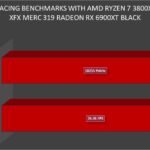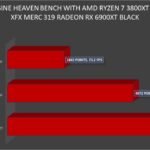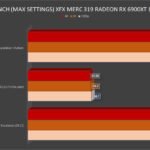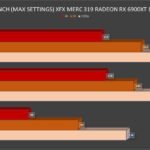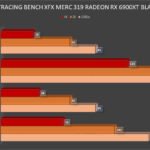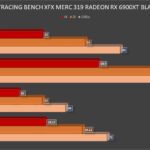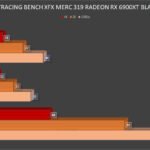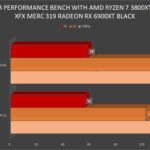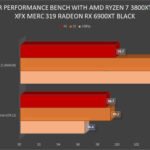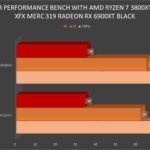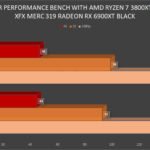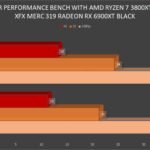With the craze of cryptocurrency mining and its profitability increasing on a daily basis, it’s now hard to find a graphics card at its actual retail price, let alone if there are enough GPU stocks for PC gamers. Meanwhile, it wasn’t long ago when AMD had released its RDNA 2 based RX 6800/6900 series high-end graphics cards to finally take on the best of NVIDIA. We were lucky to receive the XFX Radeon RX 6900 XT MERC 319 Black graphics card and got some time to try out the fastest Radeon GPU that XFX has to offer.
Design
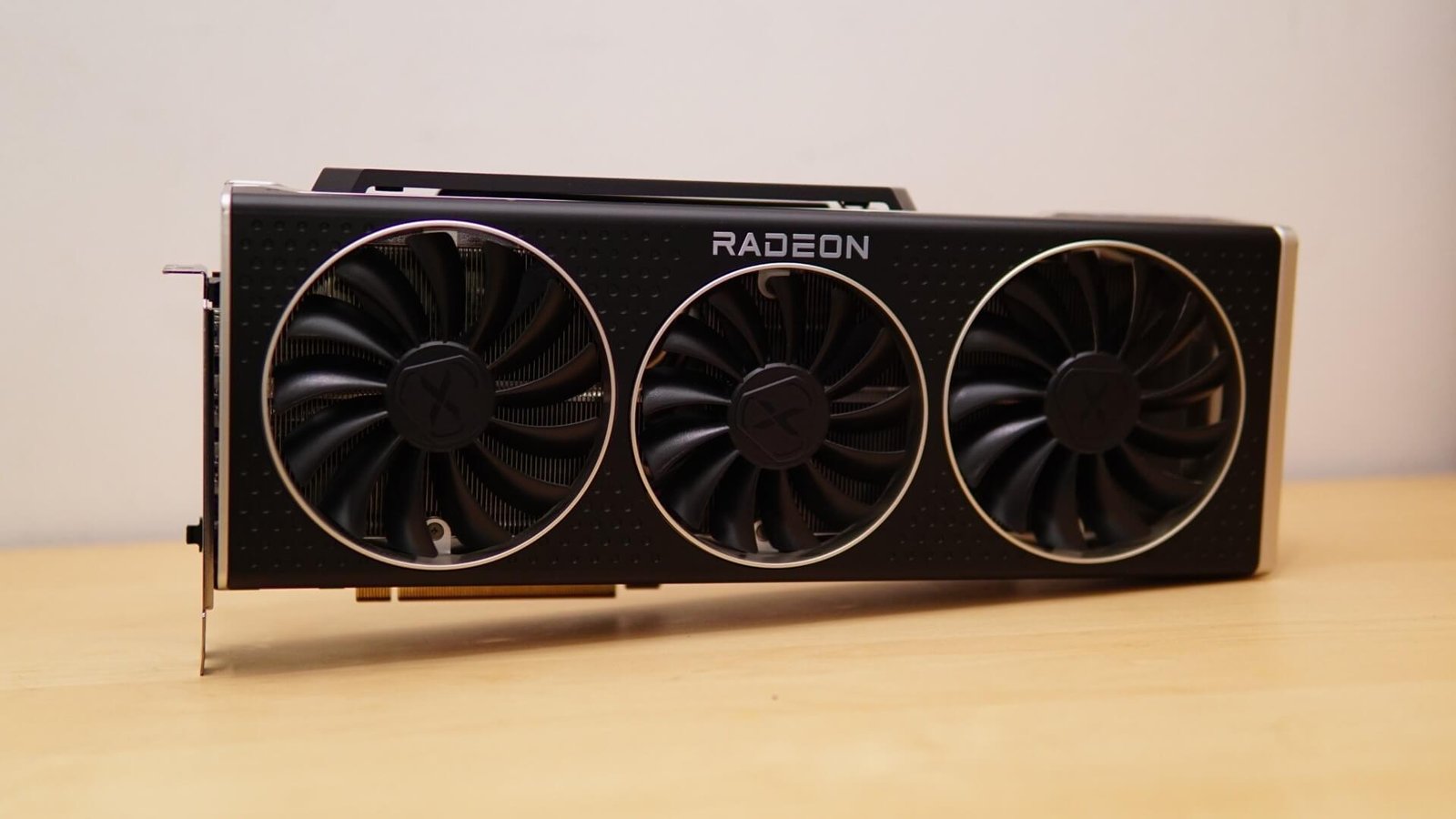
For years, we have been waiting for a Radeon high-end flagship graphics card that can take on the likes of NVIDIA. And if you haven’t noticed by now, the new card is comparatively bigger than any of the previous generation XFX Radeon 5000 series cards. If you already own any of the previous XFX cards, you would immediately notice that the overall design of the new flagship does follow the traditional XFX’s industrial design philosophy. The curves, edges, and fan rims of the chassis do strike a resemblance to the XFX THICC II Ultra Radeon RX 5700 XT that we had previously reviewed. Almost the entire card is black in color.
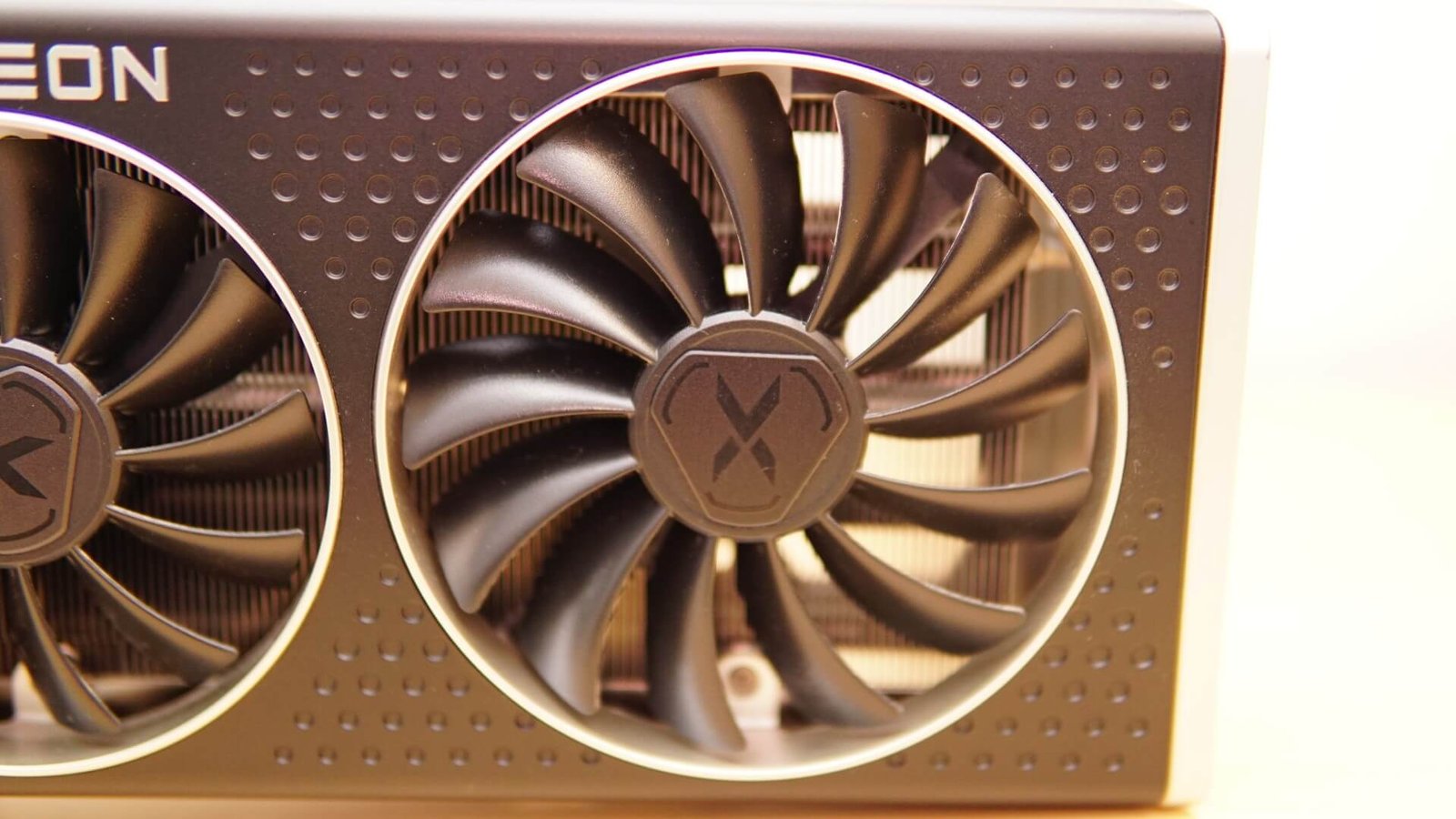 The XFX Radeon RX 6900 XT Merc 319 Black comes with a total of three 13-blade double-ball bearing cooling fans that offers quieter operations, and as XFX claims, twice the lifespan. There is a reason why XFX placed the number “319” on its branding. The “3” stands for the three fans on the card, the “1” is to indicate the two 100mm fans on either side, and the “9” is for the 90mm fan on the middle. And as usual, there is the “X” logo on all three fans. The front side of the card also features a mesh pattern all around the fan rims on the shroud. There is also the original “Radeon” branding on the top of the middle fan.
The XFX Radeon RX 6900 XT Merc 319 Black comes with a total of three 13-blade double-ball bearing cooling fans that offers quieter operations, and as XFX claims, twice the lifespan. There is a reason why XFX placed the number “319” on its branding. The “3” stands for the three fans on the card, the “1” is to indicate the two 100mm fans on either side, and the “9” is for the 90mm fan on the middle. And as usual, there is the “X” logo on all three fans. The front side of the card also features a mesh pattern all around the fan rims on the shroud. There is also the original “Radeon” branding on the top of the middle fan.
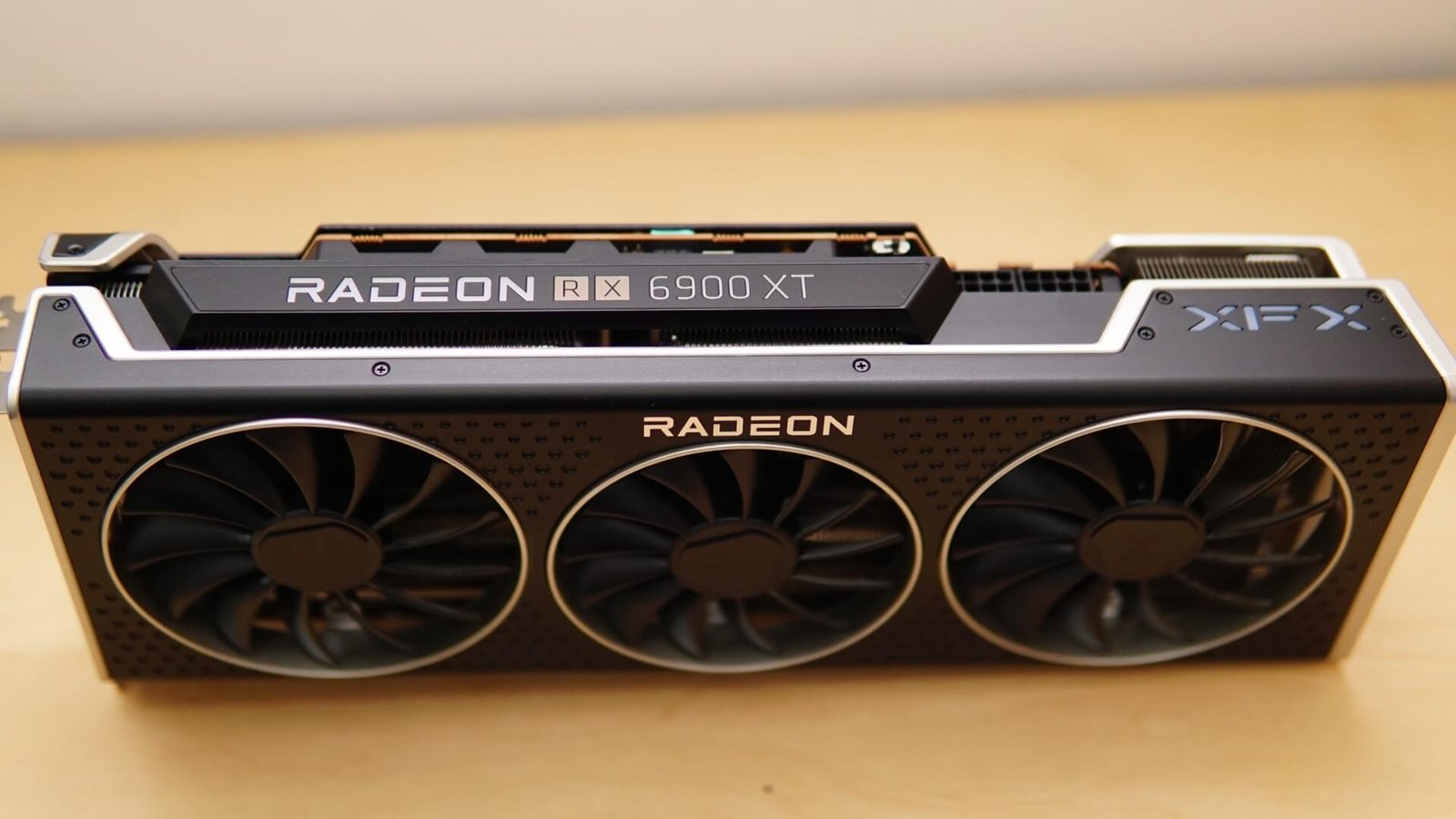
If there is one thing that is consistent among custom NVIDIA cards, regardless of the maker, is that the “GeForce RTX/GTX” logo is always present on the top portion along with the model number. And while most of the GPU makers use their own branding on their Radeon cards, XFX decided to go the traditional way and implement the illuminated “Radeon RX 6900XT”. XFX also decided to also color the “RX” in red, just as AMD does for its Radeon branding.
 There is also the XFX logo on the right side that is also back-illuminated in white color. Unfortunately, you cannot change the color of the LEDsor turn them off if you don’t like them. Personally, we feel that XFX did a clean job on the RGB front. It’s not overdone to make RGB haters furious as some GPU makers love to stuff in a lot of RGB lights all over their cards. It should also be noted that XFX has placed the BIOS switch next to the illuminated Radeon branding on the top of the card. Users will be able to switch to the backup BIOS mode in case the card undergoes a failed BIOS update.
There is also the XFX logo on the right side that is also back-illuminated in white color. Unfortunately, you cannot change the color of the LEDsor turn them off if you don’t like them. Personally, we feel that XFX did a clean job on the RGB front. It’s not overdone to make RGB haters furious as some GPU makers love to stuff in a lot of RGB lights all over their cards. It should also be noted that XFX has placed the BIOS switch next to the illuminated Radeon branding on the top of the card. Users will be able to switch to the backup BIOS mode in case the card undergoes a failed BIOS update.

When it comes to cooling efficiency, XFX has ensured that all the VRM chips, memory chips, and other essential components are equipped with thermal pads of all sizes. This is indeed an important feature if you want to keep the temperatures of these components as low as possible while gaming.

There is an aluminum backplate that features a large “MERC” insignia, along with a small XFX engraving and several holes for heat dissipation. If you aren’t aware, the “MERC” branding actually stands for Mercury. At the right side of the backplate, there is a cut-out that exposes the heatsink. Speaking of which, XFX uses its new XFX Ghost Thermal design that features a straight-through airflow from the 13-blade triple fans to the giant heatsink. The card uses 7-piece 6mm copper heat pipes with direct contacts for the GPU and the memory chips. There is an aluminum cast tray that sits between the main PCB and the heat pipes. The heat sinks are completely exposed on the bottom of the card for further dissipation of heat.
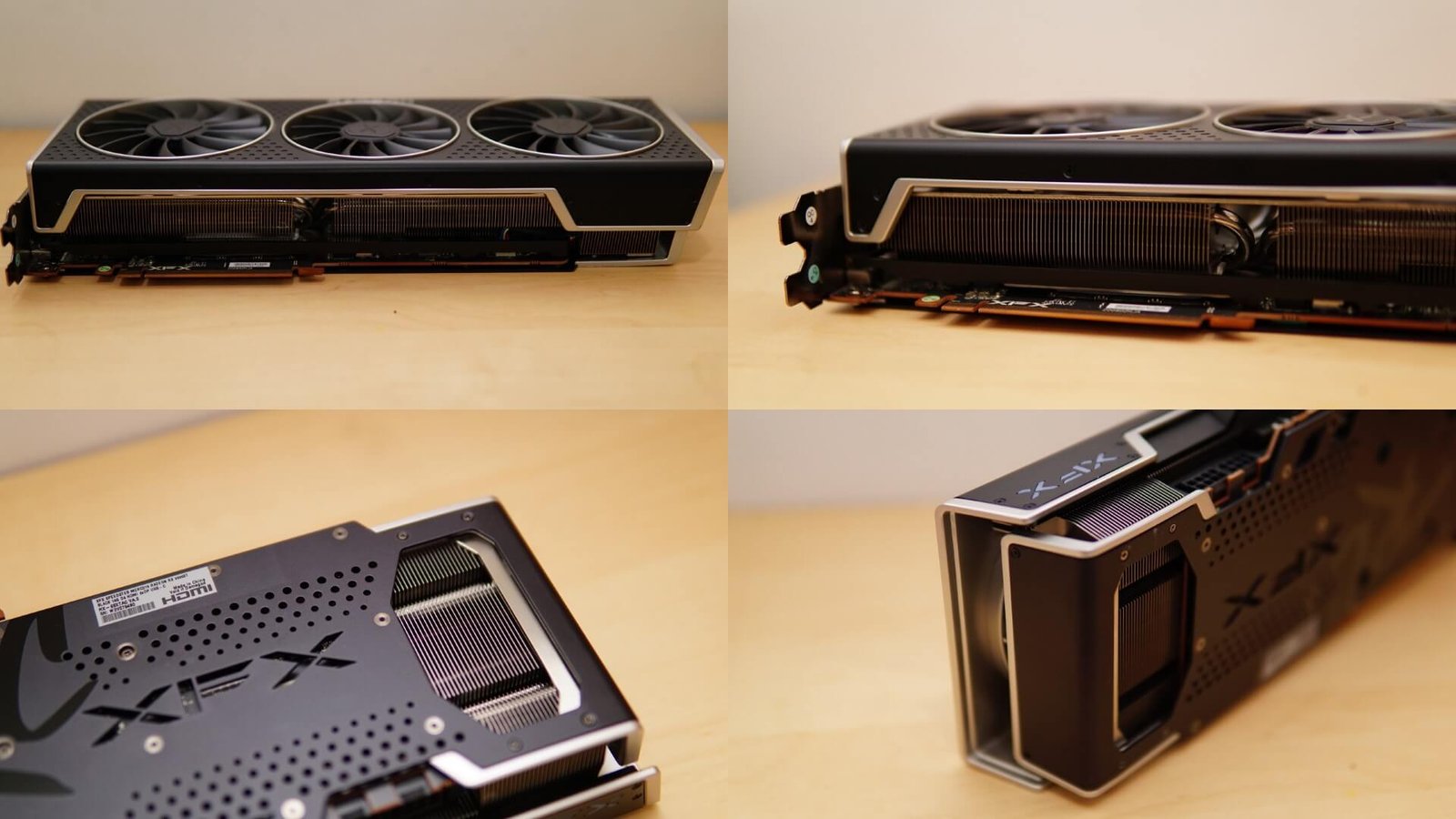
The XFX Radeon RX 6900 XT Merc 319 Black graphics card features a total of four ports, which includes one HDMI 2.1 with VRR and FRL, two Display Port 1.4 with DSC, and one USB Type-C port. The card requires two PCI-E 8-pin connections and XFX states that the minimum power requirement is an 850W PSU. The entire card features a triple-slot design and is 330mm long. XFX does mention that the card is better suited to be used on an enthusiast case like a full tower or large mid-tower cases to ensure proper airflow. Also, the card uses a PCI-E 4.0 bus.

As for the packing, XFX decided to keep the shape of the box in a vertical fashion. The packing includes the card, manuals, driver CD, 8-pin to 6-pin power cables, and more.

Specifications and Performance
It’s no surprise that NVIDIA has been leading in the high-end GPU space for the past several years. Despite featuring high-bandwidth HBM memory, previous cards such as the RX Fury series and the Radeon Vega 56/64 cards couldn’t keep up with what NVIDIA had to offer. Don’t get us wrong, the previous generation Radeons were good cards for its time. The Radeon VII, which also featured the HBM memory and 7nm GPU, was able to shorten the performance gap but the card was short-lived. And AMD’s first-generation RDNA series card only had the Radeon RX 5700XT as the highest GPU in the line-up. That said, the RX 5700 XT was an excellent card for its price (not the current price, obviously) that offered a great 2K gaming performance and was a better alternative to the RTX 2070 (except for the ray-tracing capability). Still, there was no high-end Radeon cards to take on the RTX 2080 or the RTX 2080Ti.

And while NVIDIA launched the RTX 30 series cards last year that offered faster gaming performances, AMD unleashed the RDNA 2 based high-end cards that include the Radeon RX 6800, the Radeon RX 6800 XT, and the Radeon RX 6900 XT GPUs. According to AMD, the RX 6900 XT is solely designed to take on the RTX 3090, NVIDIA’s current fastest gaming GPU. The silicon that powers the 6900 XT is the Navi 21 GPU, or simply dubbed as the “Big Navi” by the community. Navi 21 is based on the 7nm fabrication process and the die size of the GPU is 519mm2.
The GPU features a total of 80 compute units and 5120 stream processors. The chip also features a total of 26.8 billion transistors. While the new card does not have Tensor-core-like computing, AMD has included so-called Ray Accelerators and each RA can process up to four ray/box intersections per CU. Since AMD has included one Ray Accelerator per CU, so the total number of Ray Accelerators is 80 on the RX 6900XT.
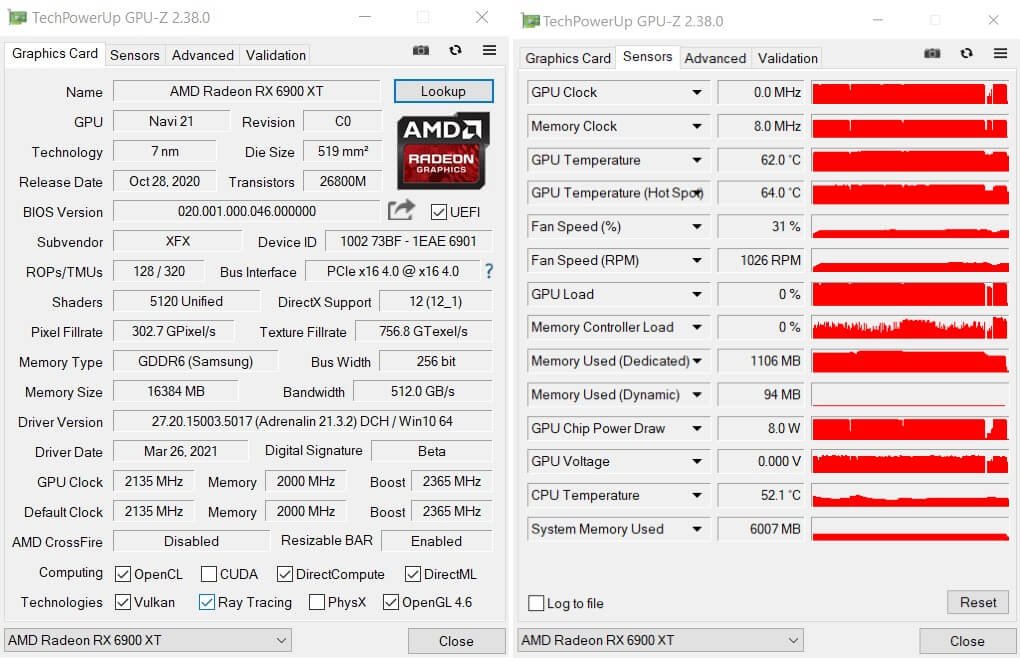
XFX has already overclocked the graphics card with noticeable performance differences. While the Radeon RX 6900 XT reference card features a game frequency that goes up to 2015 MHz, the XFX Merc 319 Black version can go up to 2135 MHz. The same goes for the boost clocks which can go up to 2365 MHz speeds on the XFX card as compared to the 2250MHz reference card clocks. AMD also introduced the “Rage Mode” (A throwback to the good old ATI days), which is capable of offering faster performances and can be activated from the AMD software.
As for the memory, the RX 6900 XT features a total of 16GB GDDR6, which is a massive room for any game out there. However, the memory bus is only 256-bit and the memory clocks are set at 16Gbps with a bandwidth of 512GB/s. While the bandwidth is considerably low as compared to what the high-end RTX 30 cards can do, AMD included a new feature called the Infinity Cache that supercharges the bandwidth with less power consumption. The Infinity Cache is basically a 128MB cache that helps to increase the performance of the 256-bit bus up to a massive 1664GB/s, which is way higher than what a 382-bit or 512-bit bus can offer.
Then there is the Smart Access Memory (SAM) that was introduced by AMD during the launch, which is now known as the ReBAR by many motherboard makers. The Resizable BAR was initially only compatible with Ryzen 5000 series processors and X470/X570 motherboards. AMD later announced that Ryzen 3000 series CPUs can also take advantage of the new memory trick. Intel and NVIDIA had also announced their updates for the ReBAR capability.
In normal systems, the processor only gets to utilize only a fraction of the graphics memory at the same time, which puts a limit on the performance. With Smart Access Memory enabled, the processor will be able to completely utilize the entire GPU memory and the speed of the PCI Express, resulting in increased gaming performances. While that is an exciting feature, not all games would benefit from the upgrade. Users will be able to enable or disable SAM from the motherboard BIOS.
With all these enhancements, XFX has also implemented a 14+2 Phase power design for stable gaming performances by the improved distribution of power among the VRMs. This gives more headroom for overclocking. On the contrary, the reference RX 6900 XT features an 11+2 Phase Power design.
Testbed and Benchmarks
It’s time to take a look at how the XFX Radeon RX 6900 XT Merc 319 Black performs in gaming. Our test bench consists of the AMD Ryzen 3800XT processor at its default speeds and SMT enabled, ASUS X570-PLUS TUF GAMING motherboard, 32GB DDR4 GSkill Trident Z RGB RAM (4 x 8GB at 3600MHz speeds), a Kingston 1TB KC2500 SSD with the latest Windows 10 Pro build installed, XFX XTI 1000W PSU, a Corsair iCUE H100i RGB PRO XT AIO CPU cooler, and the graphics card itself. We got to try numerous games in 1080p, 2K, and 4K resolutions, and at the maximum settings for almost all the games.

We also tested the XFX branded 6900 XT for ray-tracing gaming performance. And since AMD had recently enabled Smart Access Memory for Ryzen 3000 series processors, we had updated our motherboard to the latest BIOS and enabled SAM to check out the performance. However, we tried the GPU with default clocks and not in the Rage Mode. I’ve also tested benchmarks such as FireStrike, TimeSpy, Mesh Shaders, Port Royal, Unigine benchmarks, and more.
Futuremark Benchmarks
Unigine Benchmarks
Game benchmarks
From the games that we have tested, Shadow of the Tomb Raider and Rise of the Tomb Raider performs well on 1080p and 2K resolutions. However, 4K gaming performance almost reaches 60fps on average and we suspect it could have been better if we had a faster processor like the Ryzen 5000 series or any Intel equivalent. That said, DOOM: Eternal, Rage 2, Ashes of Singularity: Escalation, Battlefield V, Hellblade, and GTA 5 performed well.
However, the performance of Crysis 3 was a bit disappointing as it didn’t go beyond 64fps on average, even at 1080p resolution. Metro Exodus and Cyberpunk were taxing on the GPU at their maximum settings and performed only below 60fps at 4K resolutions.
Ray Tracing Performance
While we already know that NVIDIA takes the lead in ray tracing performance, the RX 6900 XT performed well on 1080p and 2K resolutions. However, the card did not perform well with ray tracing at 4K. Perhaps we will see an improvement on the next Radeon series.
ReBAR enabled performance
As you can see, ReBAR performance does boost the FPS count by a slight margin. However, it does depend from game to game.
Verdict
When AMD had released the first generation Ryzen processors to take on Intel, the CPUs quickly became popular, thanks to their improved performance and higher core count at a lower price. And with the latest Ryzen 5000 series, AMD now almost dominates the CPU space. The same can be said for the graphics card market as the RDNA 2 based graphics cards are solely designed with gaming in mind. AMD made sure that the new RDNA 2 based 6000 series graphics cards will have the top-of-the-line models and that’s where the Radeon RX 6900 XT comes in.
 The new XFX Radeon RX 6900 XT Merc 319 Black graphics card offers better GPU frequencies than the reference design, along with a better phase power design. Although the card is quite big, the overall unit has a clean and industrial design. There is ample cooling already available on the card, starting from the triple fans, the large heat sinks, thermal pads on the PCB chips and VRM, the aluminum backplate, and more. The performance of the graphics card is very good for most of the games at 1080p, 2K, and 4K resolutions, except for a few that already is taxing on any card. Ray-tracing performance on the RX 6900 XT is decent, to say the least, and gamers will also be able to benefit from the ReBAR capability for higher framerates.
The new XFX Radeon RX 6900 XT Merc 319 Black graphics card offers better GPU frequencies than the reference design, along with a better phase power design. Although the card is quite big, the overall unit has a clean and industrial design. There is ample cooling already available on the card, starting from the triple fans, the large heat sinks, thermal pads on the PCB chips and VRM, the aluminum backplate, and more. The performance of the graphics card is very good for most of the games at 1080p, 2K, and 4K resolutions, except for a few that already is taxing on any card. Ray-tracing performance on the RX 6900 XT is decent, to say the least, and gamers will also be able to benefit from the ReBAR capability for higher framerates.





